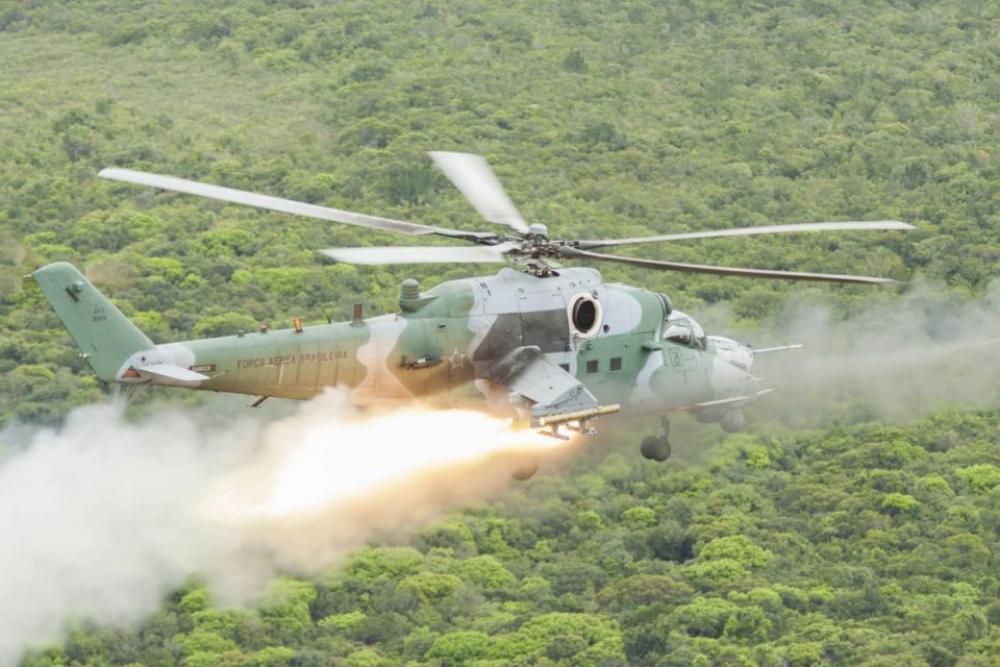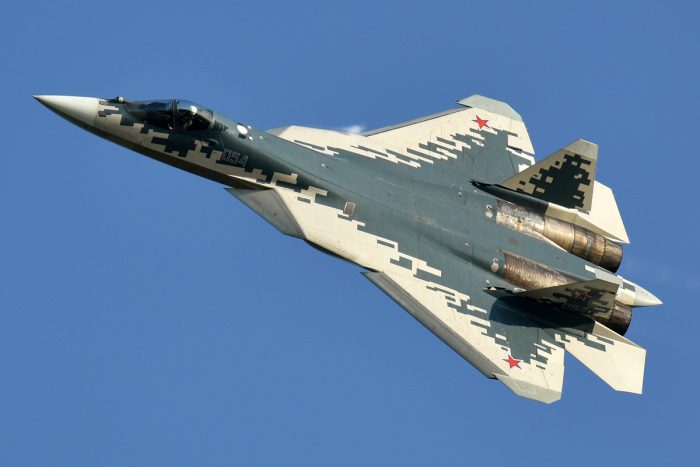Despite possessing one of the largest, most advanced, and combat-experienced air forces comprising legendary jets like the Su-30 SM2, the Su-57, and the new Okhotnik (Hunter) drone, the Russian Air Force (VKS) has still not established air superiority over Ukraine.
For a military ranked among the best in the world, making rookie mistakes in a conventional war should rather tell one about their goals rather than their capability. And if the goal is forcing Ukraine to accept its terms, then it wouldn’t need to fight the typical way.
Simply put, executing a devastating air campaign that wrecks Ukrainian cities and its military wouldn’t suit its political goal of ensuring Kyiv doesn’t join the North Atlantic Treaty Organization (NATO).
Neither would Russia need the kind of overwhelming air superiority since neither NATO, the US nor any other European country is directly fighting in the war.
Ukraine’s small fleet of merely 98 aircraft hasn’t even faced the entire complement of Russia’s 1,511 planes, thus making the latter’s few dozen losses, mostly to Ukrainian air defense, negligible.

Experts have pointed to a battery of mistakes the Russians seem to have made – a lack of precision-guided munitions (PGM); the absence of targeting pods that force the VKS to use unguided bombs causing collateral damage; pilots with less than 100 hours of flying a year; poor coordination with ground troops; and a general inexplicable predisposition towards a land war. And this is where they fail to understand Russian strategy.
Some US Air Force and intelligence officials posted in Europe counter these observations, saying military commentators expect Russia to “mirror US-style operations” with massive air raids that swiftly take control of the skies and destroy the enemy’s military capability.
Ukrainian pilots have rather lamented taking massive (and unreported) losses. Saying their outdated MiG-29s are “just targets” for the VKS’s far superior fighter bombers, who neither can be taken down by US-made Stinger MANPADs, – more suited for low flying helicopter gunship – raining fire and brimstone on Ukrainian targets.
Russian Military Is “Full Of Marathoners”
According to John B. Alterman, Senior Vice President of the Zbigniew Brzezinski Chair in Global Security and Geostrategy from the Center for Strategic and International Studies (CSIS) unlike, the US military, Russia doesn’t like to win wars in a “sprint”.
Pointing to how that approach eventually failed in both Operation Enduring Freedom in Afghanistan (2002) and Iraqi Freedom (2003), he said the Russian military is “full of marathoners” in for the “long haul”, evident from its campaign in Syria in support of President Bashar al-Assad.
Fighting alongside the regime’s Syrian Arab Army (SAA), Russia seemed to accrue advantages incrementally, gradually destroying the Free Syrian Army (FSA) rebels that comprised many fundamentalist groups, Daesh (ISIS), with Assad emerging victorious.
With less than 5,000 troops and barely two dozen fixed-wing aircraft comprising Su-33, Tupolev Tu-22M3 bombers, and Mi-35 gunships, its intervention was decisive, providing air cover for Syrian troops. It has ended with Russia retaining its airbase in Khmeimim and naval base in Tartus – which also allows limited power projection into the Mediterranean Sea and South Caucasus.

Russians, therefore, are in complete harmony with the Clausewitzian dictum of war being “politics by other means”, where even losing militarily can still mean winning politically.
Ukrainian President Volodymyr Zelenskyy has since the beginning of the war repeatedly offered to give up NATO membership and engage in talks with Russia. The March 29 Ukrainian proposal offered itself to become a non-aligned, non-nuclear state that wouldn’t hold any foreign military bases.
It wouldn’t be far-fetched to connect this to the restrained and surgical campaign that did not drive Zelensky to the wall and ensured he maintained a diplomatic track.
At the same time, neither a total Russian defeat would have been an incentive for the Ukrainians to continue talks, who would have rather pressed home the advantage and possibly taken the fight into Donbas, if not Russia.
The “heavy Russian losses” meant nothing when it was revealed at the beginning of the month how Russia’s commanders while running separate military campaigns in the east, south, and north were aiming at building a contiguous zone from the east to Ukrainian coastal city of Mariupol.
Russian disinformation tricked the Ukrainians into believing the target was Kyiv, where they concentrated their forces.
Seeing the last pocket of resistance near and around the Azovstal steel plant in Mariupol turning out to be a tough nut, Russia has now focused its attention on Donbas, aiming to fully liberate it.
This includes pushing the Ukrainians back to even their administrative boundaries, further from the areas controlled by the breakaway Luhansk and Donetsk People’s Republics (LDPR).
This ensures that even if Zelenskyy does drag Ukraine into NATO overriding the silent yet stiff opposition to avoid going to war with Russia, it will be far away from Russia’s western international boundary.
Russia already controls Crimea – which voted independence from Kyiv in a 2014 referendum – that can serve as a launchpad for further operations.

And if Russia fails to fully liberate Donbas assuming Ukraine’s best units launch well-coordinated counter-offensives where it retains only the LDPRs, permanently holding the areas under its control and maintaining a hard border will wear down Ukrainians and even the rest of Europe. And this is also where the VKS comes in, where they can repeat what they did in Mariupol.
Surround the defenders, cutting lines of supply providing ammunition and food, before unleashing a barrage of heavy artillery, drone strikes, long-range, cruise missile strikes with Russian fighter bombers, and helicopters constantly harassing the Ukrainians.
All this while gradually closing the circle and creating a kill zone. Russia has long been publicly targeting Ukraine’s defense industry and major military bases that support long-drawn-out wars.
And interestingly, it is a legendary Syria hand that Russia has brought in for this decisive phase of the ‘long war’ – General Alexander Dvornikov.
Also experienced in both the Chechen wars, Dvornikov refined the ‘patience’ game of never applying too much pressure, nor easing it. Regardless of whether Russia is justified in its military intervention, one thing is clear – Russia will not stop until its objectives have been achieved.
- Parth Satam is a Mumbai-based journalist who has been covering India’s defense sector for more than a decade. He maintains a keen interest in defense, aerospace and foreign affairs and can be reached at satamp@gmail.com
- Follow EurAsian Times on Google News




